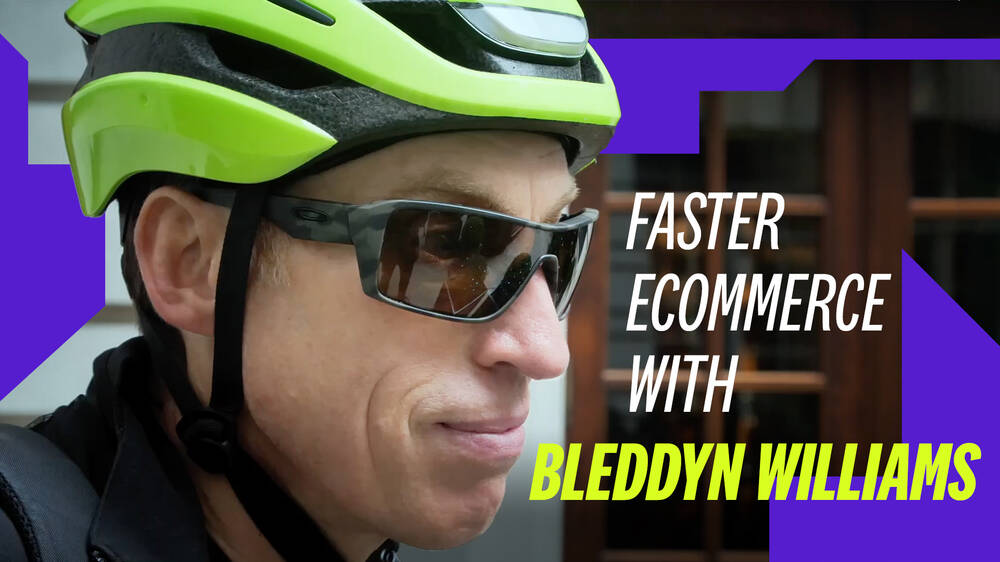- Jan 12, 2022
- 7 min
Digital Leadership Lessons From Bleddyn Williams
A Dose of Clarity About Fast Time-To-Market in Ecommerce
Magnolia in action
Take 12 minutes and a coffee break to discover how Magnolia can elevate your digital experience.
Clarity can make or break the success of a business. You need clarity of vision and strategy, and that message needs to be communicated to everyone within the company.
If you've got clarity it is going to increase your momentum. It’s going to increase how quickly you can do something. Having that clarity of why you're doing something, being able to have purpose, being able to think about where it fits in the strategy. This will help you move more quickly in terms of what you're doing, because you don't end up building the wrong thing or going off down the wrong path.
We touch a lot of customers both externally and internal colleagues in the buy, fulfil and in-store space that I look after at Sainsbury’s. It’s very much a digital leadership role. We're trying to bring together all the different parts of the business from our user experience to our engineers and our product teams. We’re trying to bring all that together and then build the right interaction with customers and do it in a way that works both for Sainsbury's and for the end user.
Lessons Learned From Early Days in Tech

When it comes to technology, you need to be constantly innovating. You can't be afraid of pushing the boundaries of what's possible. Digital teams shouldn't just accept that there is only one way to do something. Instead, you need to challenge your thinking.
Whether it's your own technology with a build approach or working with another vendor and buying, digital leaders must ask questions about what the technology can do and push the boundaries of the product rather than settle for one way of doing things.
If we only look inward, we tend to do the same things. Even though technology changes, the thinking and problem-solving methods don't change that much, but having experience is always helpful.
Building Business Relationships
I love cycling and I’m always watching how they do things in person and on TV. You've got lots of different people who work together to create a win for a team. It's not just down to that one team leader. When they do win you would very rarely hear the person who's won just talk about themselves. They talk very much about the team. And I think in business it's exactly the same principle.
Someone is going to need to make decisions and need to lead things that are taking place. But it's not that person who has got the win and delivered a successful product - at least not alone. It’s everyone working together that will deliver success, no matter the role that they're playing. If that team doesn't function, if for example product and engineering don't talk to each other well, and there's a divide between them you won't be successful at what you do.
Even when you choose to work with a third party you need to be clear on what you’re looking for and where you’re going. The same applies to third parties who need to know the direction you want to go in and be honest about what they can deliver. When the partnership is strong, the solutions built together will be even stronger.
There needs to be communication for this to succeed since transactional interactions don't necessarily work in the long run. Even for companies trying to sell a service to clients, building these types of business relationships is critical.
We've been talking a lot recently about Badgeless teams. I think that's really a good way to talk about how a partnership is. No one should say I'm from Company A, I'm from B, I'm from C. Instead you're just all trying to work towards the same outcome. Building relationships is crucial to DX success and speed. In a small organisation, it's possible to build influence quickly, but this takes longer in larger companies.
How Fast Is Fast? Setting Business Expectations
Fast can vary depending on the size of a company. For larger companies, achieving something in three months may be considered quick. In a smaller business, four weeks and even days may be considered fast. Ultimately, it comes down to what you're working on and your expectations for stakeholders.
Having a well defined minimum viable product can help everyone get on the same page so that everyone is thinking about the right level of expectations. Having an outcome-based model can help, instead of working on projects where teams are disbanded after the project is completed. Long-lived teams will provide ownership, for example, having a team that owns search and another that owns checkout means it is theirs and they will want it to be successful.
The Importance of Strategy
Having a well defined strategy that comes from the top of the organisation can help align everyone. Without it, it can be difficult for team members to see where they fit and how to align and prioritise outcomes against that strategy.
The Importance of Clarity
In many businesses, executives may have a predetermined launch date for a project that isn't always feasible for the technical team to accomplish. They haven't had a chance yet to analyse how long things might take them, especially as agile is not about trying to plan the answers. The tech team needs to look at the proposed business outcome and explain what can be done and work towards agreement. By being clear on the possibilities and the process, you can remove some friction.
Why You Need Executive Support
However you will still need support within the business and that can make all the difference for DX success. If you run into problems, having executive backing can help you to solve problems that crop up. Also, when disagreements arise between business and technology departments, an executive who understands both sides and the bigger picture can help break the tie.
Why Is Speed Difficult for Large Organisations?
Bureaucracy, politics, different departments priorities, and legacy technology can all play a role in moving a large organisation forward. Ultimately, the speed a large organisation moves at depends on how much clarity there is. It's impossible to increase your momentum if you don't have clarity and everyone bought into a specific outcome. Speed is made up of many different parts, including having clarity of purpose and where it fits into the strategy.
Creating Change in an Organisation
When it comes to creating speed, it can be easier to influence things if digital leaders have already been at a company for some time. For leaders at a company, you can have a better understanding of the various nuances and can influence change by using your existing partnerships and networks. Building up these connections at a company allows you to cut through the noise and increase influence as you've already built up trust.
What Does DX Mean?
Digital experience comprises many pieces, though most people would think it primarily relates to the front end, where customer interactions happen. However, it also includes the way the entire solution is put together. The backend architecture, the way services work together, and the ability to scale. Downtime when changes are being released, how testing is conducted, and more all will impact the customer experience. That customer experience is always changing and so too are their expectations, meaning that it's not just down to what your company does, but also your competitors.
Being adaptive is critical in the modern experience as technologies evolve over time. Teams must constantly question what they have, and not be prepared for the status quo and the fact it works. There are new problems to solve and to look for the minimal gains that when brought together will make a difference for the customer.
In answering those problems as well you have to think about building or buying an outcome. If you hand your engineering team a blank chequebook they’ll love the opportunity to build a piece of tech. But there are times when investing in technology is ideal. By leveraging a third-party and adopting a best-of-breed approach, you can build the capabilities on top of these solutions that make your brand stand out rather than spending time in standard capabilities.










